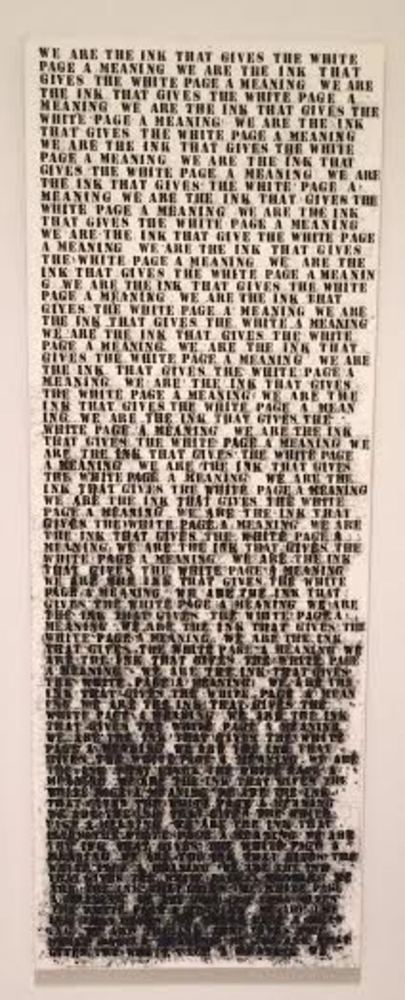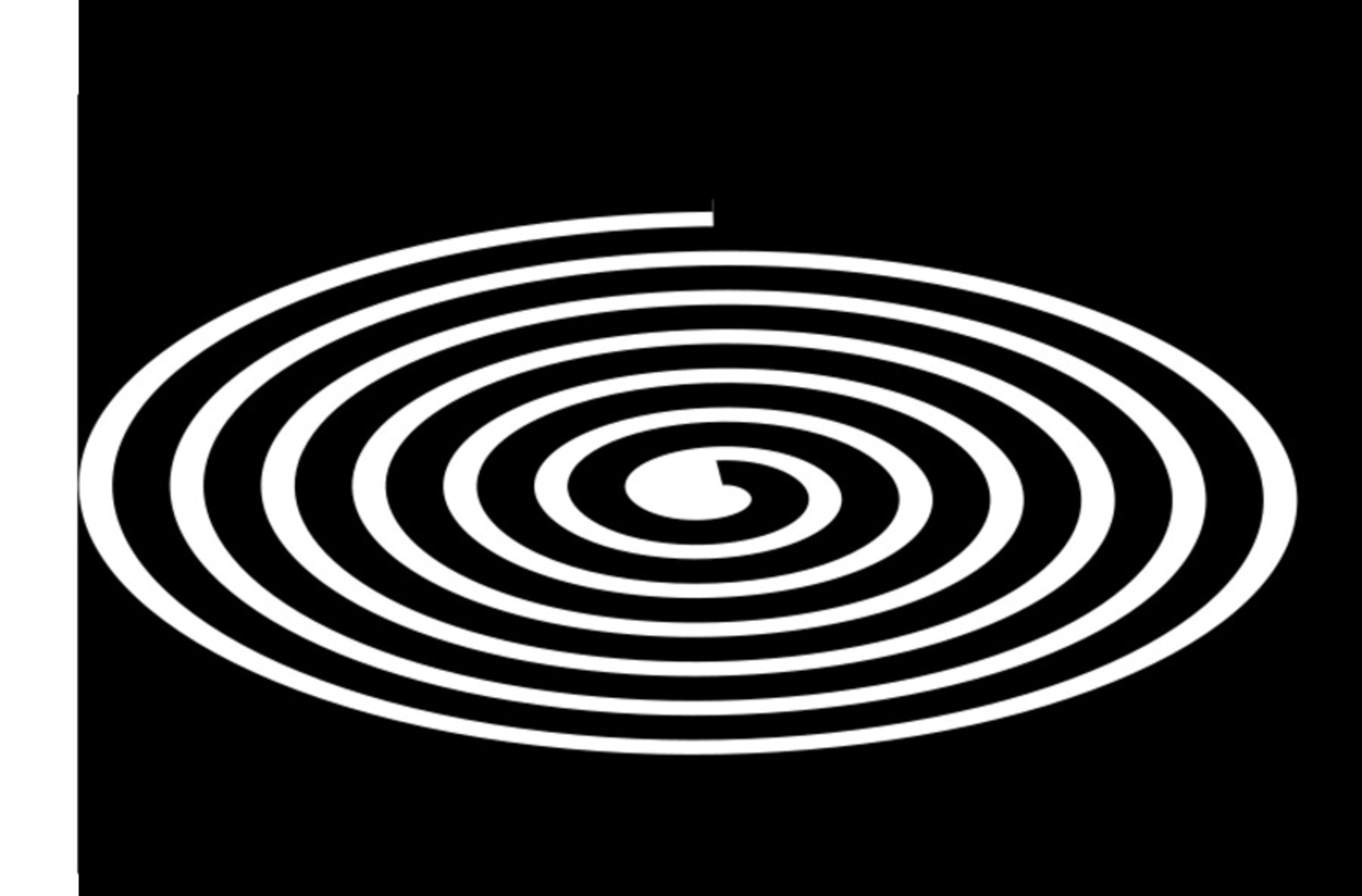Work
I had examined Glenn Ligon's Prisoner of Love #1 (Second Version) for my experience-reproduce project. It's use of text caught my eye over the more abstract shapes that had filled the room. Although a picture is worth a thousand words, I find actual words convey meaning much more efficiently. The words on the work coupled with their context as well as background information on the artist allowed me to study and find meaning in this piece easier than I could with a more abstract one.
The sentence repeated all over the work is "We are the ink that gives the white page a meaning", which is a reference to Jean Genet who had written, "In white America, the Blacks are the characters in which history is written. They are the ink that gives the white page a meaning," in his memoir Prisoner of Love.

